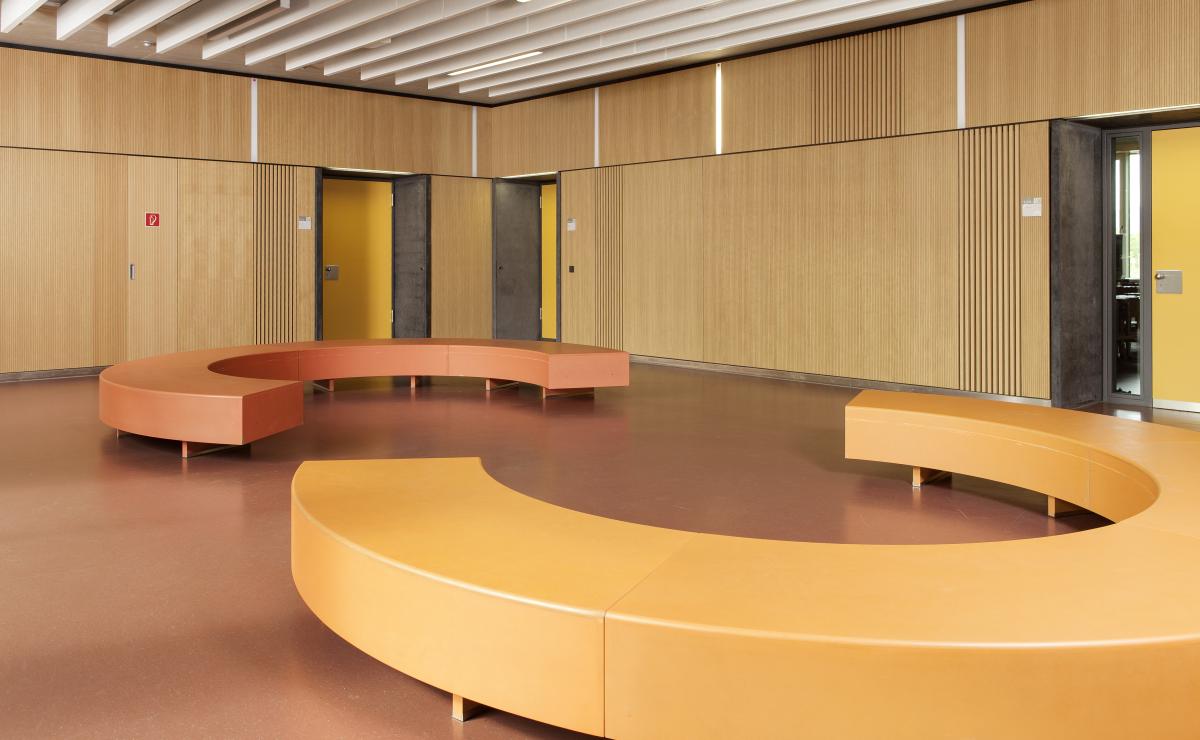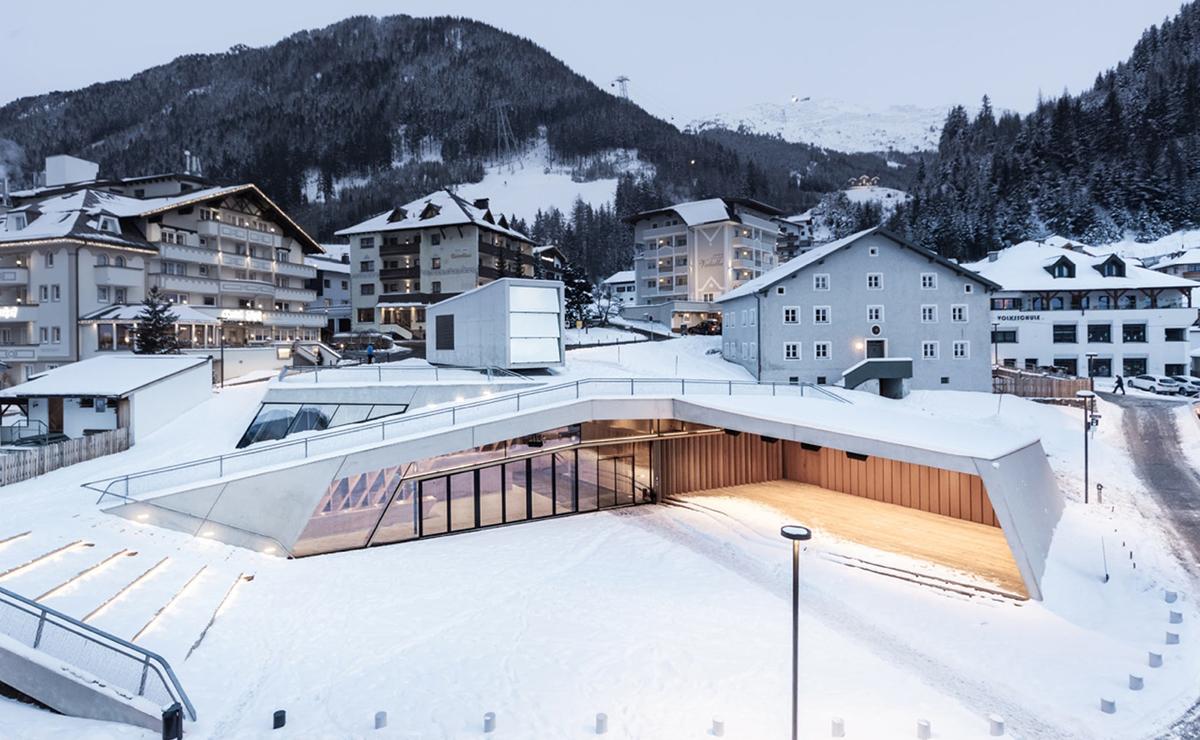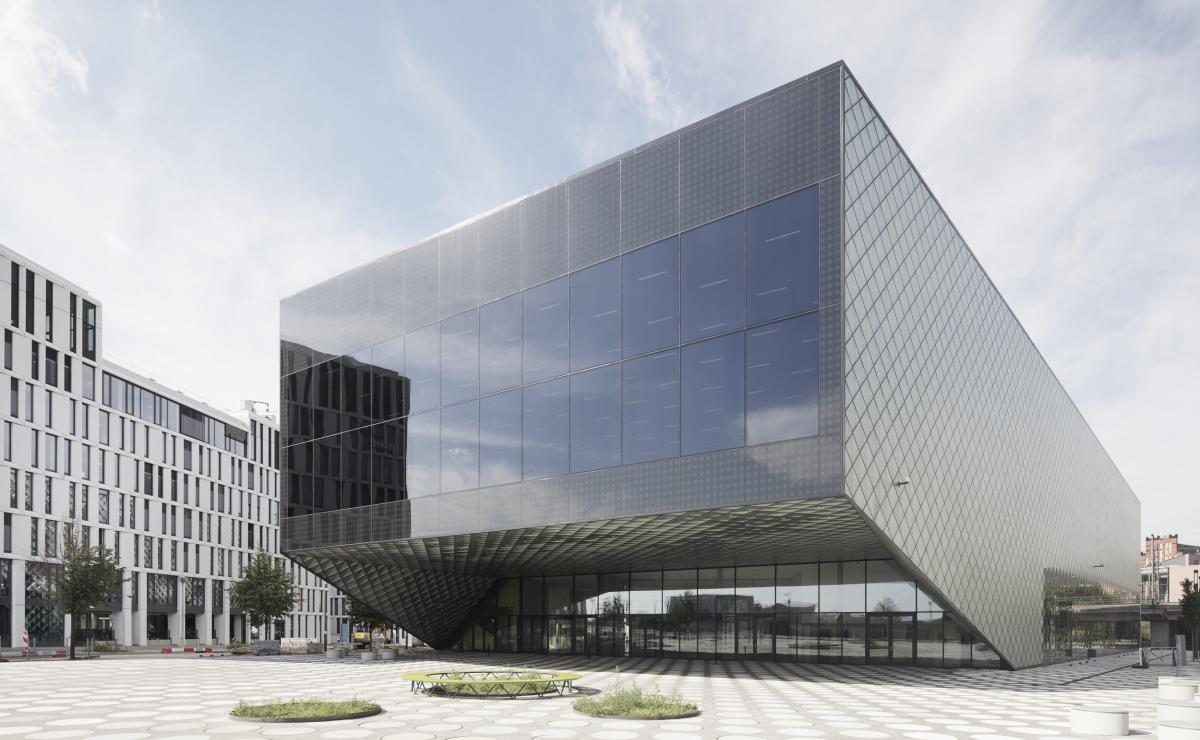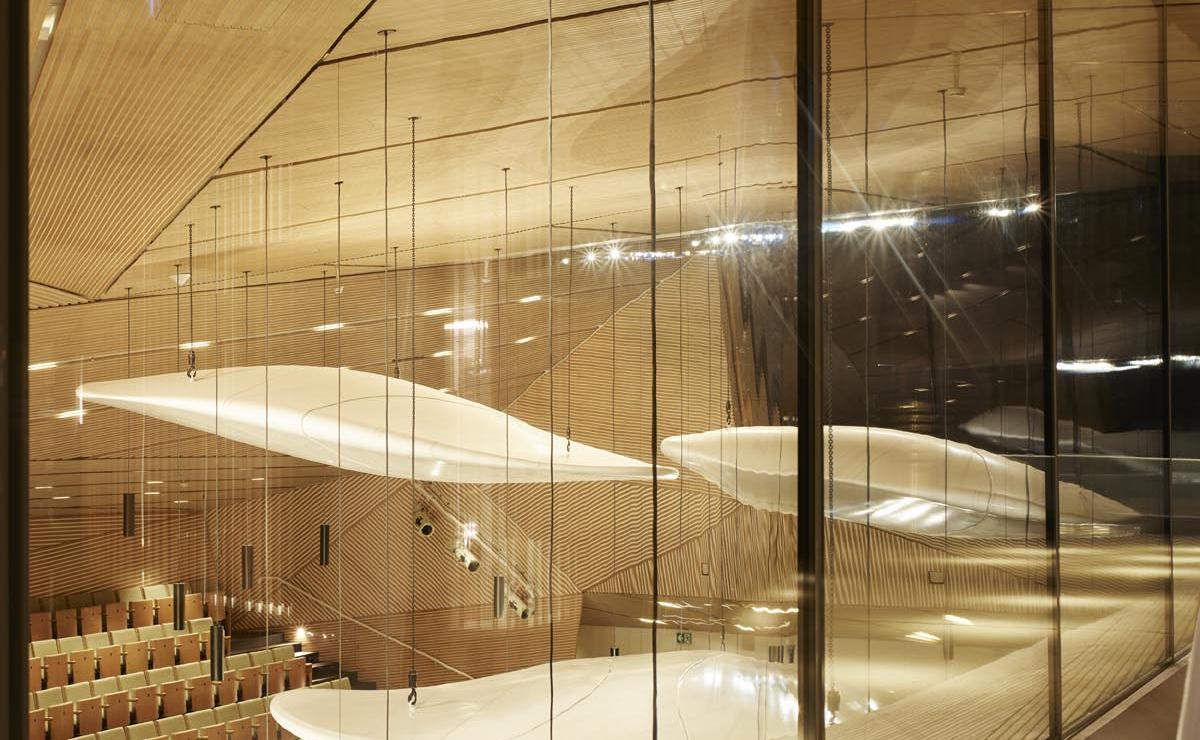product
proline finest
laminate
H3860 Hard maple champagne
location
Leiden | Netherlands
year
2021
area
approx. 100 m²
architect
Lubbers+Venekamp (NL)
customer
Matude B.V.
photo
Boudewijn Boer
Sacred acoustics in a modern look.
The acoustics in sacred buildings are often giving rise to discussion. Once in a while, church visitors complain about poor speech intelligibility during a church service. Corresponding measures to improve the acoustics often have to be communicated very delicated and implemented with great sensitivity. Sacred buildings are holy places and the topic of monument protection often poses a planning challenge. There are almost always different areas of tension and different starting situations on the part of the customer.
Architecturally, from chapels to cathedrals, there is an abundance of room shapes of different volumes. The reasons for a church visit also change constantly and with it the utilization of the capacity.
Church visitors expect optimal acoustic conditions for all uses with a sacred atmosphere that matches the architectural expression. A study shows that the reverberation time in churches is closely related to the denomination (Catholic, Protestant) and the building epoch (Gothic, Baroque, Modern). For example, it can be assumed that the reverberation time in Catholic churches is longer on average than in Protestant-Reformed churches, where more weight is attached to the spoken word. Furthermore, the Gothic and Romantic architecture is significantly more susceptible to a long reverberation time.
The difference between an unoccupied and an occupied church can also be made clearly visible and audible. It is well known that church visitors absorb a lot of sound energy, which means that the reverberation is shorter in occupied churches than in unoccupied churches. In today's churches, which are often weakly attended during normal church services, the reverberation time is therefore often longer and speech intelligibility is correspondingly even worse.
The “Herengracht kerk” in the Dutch town of Leiden is a successful example of subsequent room acoustics optimization. The part around and behind the altar was covered with an acoustically effective wall cladding. The acoustic elements with a light maple surface blend discreetly into the overall picture of the church. The acoustic design is also kept minimalist. Our famous micro-perforation finest is very discreet and is hardly visible even from closer distance.
The composition consists of a large number of triangles of different sizes. The use of these geometric figures looks modern and playful as well as straightforward and thoughtful. From a functional point of view, the wall cladding primarily serves to absorb the sound events from the audience area. A reflection can thus be prevented and speech intelligibility can be improved. The same applies to the rear part of the church. Here, too, there are acoustic elements to the left and right of the organ. This improves the unwanted sound reflection, especially when sermons in the room.
Our long-term partner Matude B.V supervised this project.
Other projects
Glucksman Library
The architects worked out a draft concept based on the original library building, which has already…
Philipp-Reis School
More than 1,000 m2 of wall cladding veneered with real wood surface in oak
Cultural center of Ischgl
The cultural centre combines the rustic with the modern Ischgl.
Futurium
The different perforations and finishes of the elements present the visitor with a modern and…
Andermatt Concert Hall
akustikplus produced over 1,000 m² of customised acoustic panels for this unique project.
École Privée Sainte-Anne II
In Ettelbruck, Luxembourg, the canteen of the École Privée Sainte-Anne was to be extended.





